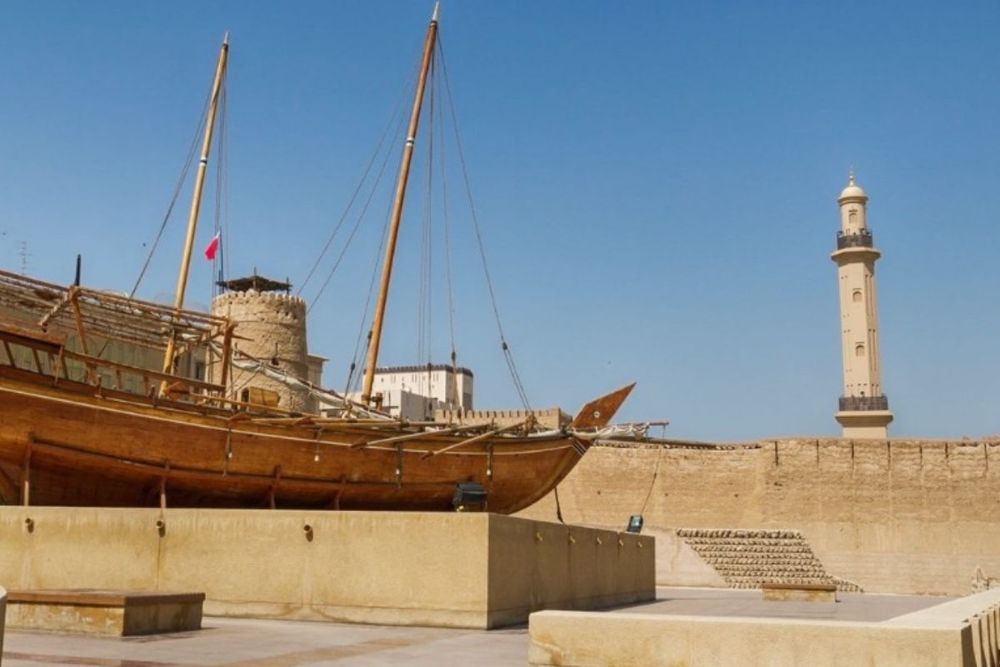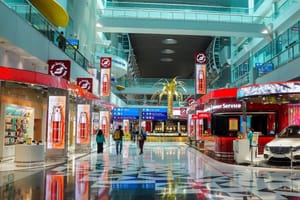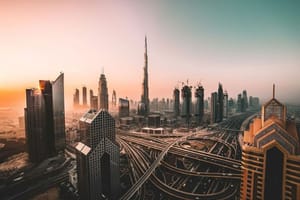In a city as luxurious as Dubai, the main attractions are, of course, the record-breaking buildings and the advanced technology integration. With dozens of malls, parks, and hotels, Dubai remains one of the fanciest tourist spots in the world. However, the luxury and extravagance often overshadow the true and authentic parts of Dubai. The city is rich in culture and heritage, and there are countless places that highlight that, one of them being the Dubai Spice Souk, which has been around for over 50 years!
Spice up your life! Here is everything you need to know about the Dubai Spice Souk.
Overview
Located in the Deira neighborhood, right next to the corniche, the Dubai Spice Souk is one of the perfect places for anyone to get a glimpse at Dubai’s heritage and history, and all cooks to learn how to expand their culinary palate. Deira is one of the oldest areas in Dubai and is usually referred to as “Old Dubai.” Likewise, the spice souk is often nicknamed the “Old Souk.” You can see how trading went back in the day with the narrow alleyways, the open and closed roofs, and the historical architecture. Although there are countless other Arab-styled markets nearby, like the Gold Souk, the Spice Souk is unique in its variety of items.
What you can find there
Spices

Of course, the Spice Souk sells… spices! The historical and traditional market is a perfect place for exploring, whether you want to give your food a new spin or simply just want a preview of all the spices. Everybody knows that you cannot have authentic Middle Eastern dishes without spice or herbs. So, walking down the alleys of the spice souk market will give you a completely new sensory experience with its unique aroma, the vibrant spice colors, and the overall environment. With over 150 retailers, the souk’s stock comes in fresh daily, usually by dhows. You can find spices from countries like India, Pakistan, Iran, and more. The souk sells a crazy range of spices, from the world’s most expensive spices like authentic saffron, to easily accessible spices like cinnamon and cumin. Aside from that, you can also find herbs like the famously used za’atar and Iranian fenugreek, different herbal tea mixtures, dried fruits, dates, and mixed nuts. Everything in the souk is sold either by weight or already in packets, so you can buy in bulk if your heart wishes so! Not only that, but the vendors allow you to test and taste the spices if you want to get a hint at what you're buying, and you can get classic kitchen utensils as well. During your visit, you might notice the prices– but don't let that freak you out! Bargaining and haggling is not only encouraged, but it's actually expected. Vendors appreciate some good bargaining skills, and if you really impress them, you can get those spices for up to 80% off their original price!
Perfumes

In addition to spices, you can also find a variety of Arab scents for gifts or souvenirs. One prominent perfume you can find is Oud. Oud is derived from the agar tree and is popular in the Middle East and specifically the UAE. The strong and pleasant scent of the oud can be sensed all over the Spice Souk. You can also buy bakhoor, which is a lighter version of oud. Also made with agarwood, what makes bakhoor different is that it is soaked in jasmine, making the scent more subtle. Some other scents and perfumes you can find at the Spice Souk include incense and incense burners, shisha, and essential oils.
Unique things to buy at the Spice Souk
Here are the most bizarre things you can find in this bazaar!
Qara Qurut

Qara Qurut, mostly known as Kashk, has an origin that dates back to the 10th century, and can be found in Afghanistan, Iran, and other regions in the Middle East. Made of drained yogurt, sour milk, or buttermilk, Kashk is unique in its long shelf-life, and is usually added to thicken soups and stews, or to add flavor to meat and vegetables in different international cuisines like Turkish, Kurdish, and Asian cuisine. The Spice Souk sells Qurut in a variety of shapes, like rolled into balls, stripes, or chunks.
Gum Arabic

This product has been used since the 9th century in the Middle East. Gum Arabic is usually referred to as "Gum Sudani '' or "Gum acacia", is simply hardened tree sap. The gum gets its different names for many reasons. The sap is mostly harvested from the Acacia Senegal tree, hence the name "Gum Acacia". Aside from the acacia senegal tree, the sap is also taken from wild trees in general, including the Vachellia Seyal and the thorntree, which are most prominent in the country of Sudan. Gum Arabic also offers many health benefits when mixed with water. The solution acts as a prebiotic, helping with the liver, kidney, and even helps with diabetic patients. Aside from the health benefits, the gum can also be used in other instances like painting, where it's a binder for watercolor paint, ceramic glazing, and can help in colored photos when mixed with different compounds.
Sea Beans

Scientifically called the Entada Gigas, sea beans are indigenous to Africa but can be found all around Central and South America and the Caribbean. The liana of this plant can reach to up 8 feet, and holds one of the largest seed pods, over 12 cm long and 6 feet high. The pods contain around 10 to 15 seeds, and the hollowness of the pod allows it to easily move in water, hence its discovery all over the world. These seeds also have many health benefits, some of which include preventing infections, alleviating body pain, and healing. The pods are also used in some jewellery as well.
Maryam’s Flower

Scientifically named Anastatica, this flower has both a religious past and a long list of health benefits. Some other names of this flower are “Kaff Maryam” and “Maryam Booti”. The flower, found in North Africa and other Middle Eastern countries like Saudi Arabia and Palestine, is usually found as a shrub and is known to help in childbirth and pregnancy. Aside from helping with labour, the flower also helps ease colds and cases of flu.
What’s Nearby?
Gold souk

Adjacent to the Spice Souk, the Gold Souk is another historical market, as well as the world’s largest gold market. As the name suggests, the Gold Souk sells only the best and purest gold jewelry. Not only is it the most popular market in Deira, but it’s also a hot tourist spot! Holding the world’s largest gold ring, weighing 64 kilograms, everything sold at the market is closely monitored by the Dubai Government to make sure every that is being sold is completely authentic. Aside from the 22-karat gold, you can also find diamonds, silver, or any other stone you need!
The souk’s timings are from 9:30 AM to 9:30 PM on Saturdays through Thursdays, and from 4:00 PM to 9:30 PM on Fridays.
Heritage House

Originally built in the late 19th century, the Heritage House is a 4 minutes’ walk from the Spice Souk. Visitors can explore how the famous merchant Sheikh Ahmed Bin Dalmouk lived. You can view the house’s patio, kitchen, living room, and the local architecture of Old Dubai. Built from coral and gypsum, the house is free to enter, and if you get tired of walking around, you can enjoy a classic cup of tea on the patio. In 1994, the building was acquired by the government and restored to serve as a tourist spot and historical site. The Heritage House’s timing are from 8:00 AM to 7:30 PM on Saturdays through Thursdays, and from 2:30 PM to 7:30 PM on Fridays
Location and timings of Spice Souk
The souk is found near Baniyas Road in Deira, which is on the northern bank of the Dubai Creek. The timing for this bazaar is from 10:00 AM to 10:00 PM from Saturdays through Thursdays, and from 4:00 PM to 10:00 PM on Fridays. However, the souk is closed for breaks daily from 1:00 PM to 4:00 PM. Considering this is a popular tourist spot, the souk is guaranteed to be crowded, so it is recommended to visit during the cooler months, from October to May.
Also Read - A Guide to the Best Dubai Souks and Markets
How to get there
One of the easiest ways to reach the Spice Souk is by metro. Taking the Green Line to the Al Ras Metro station is the closest, leaving you only a few minutes away from the souk. If you’re travelling via car, you can take advantage of the parking next to the souk. With an RTA bus, you can ride the bus from your nearest bus stop and get dropped off next to the spice souk. The more exciting way to get there however is taking a dhow ride! For just 1 AED, you can take a dhow across the Creek to the Old Souk. This way, you can get a magnificent view of Dubai’s landmarks like the Burj Khalifa and get a look at the historical sites all around Deira.
Also Read:















